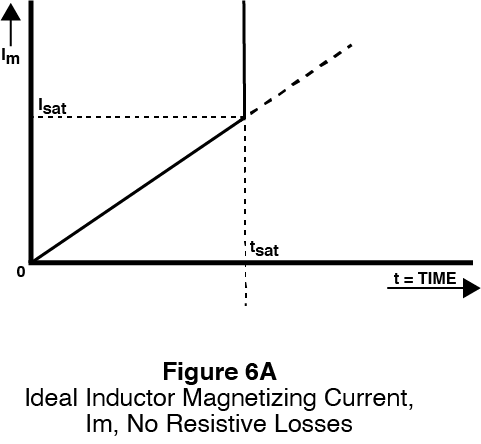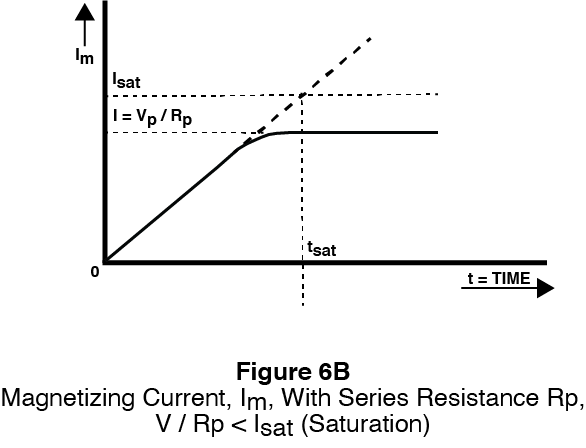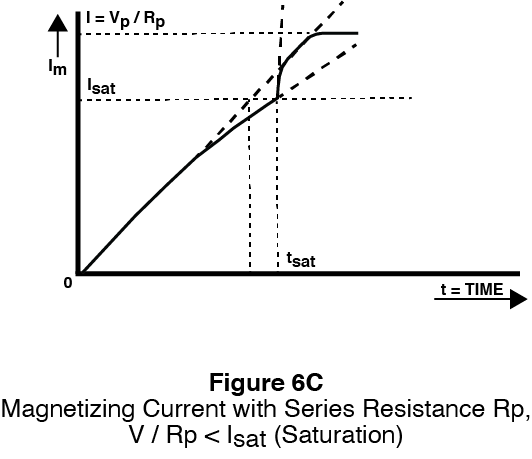Ideally the output pulse waveform should be identical in shape to the input pulse waveform except for a desired amplitude change due to the step-up or step-down turns ratio. Any other deviation is considered to be distortion. Rise time, droop, trailing edges, and spurious oscillations are all considered to be signal distortions.
Figure 6A, 6B and 6C illustrate various types of distortion. The trailing edge is further described below.



